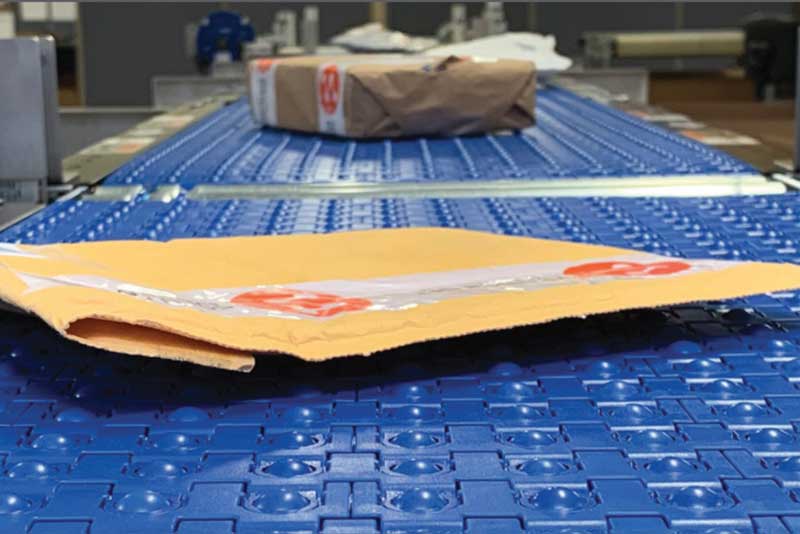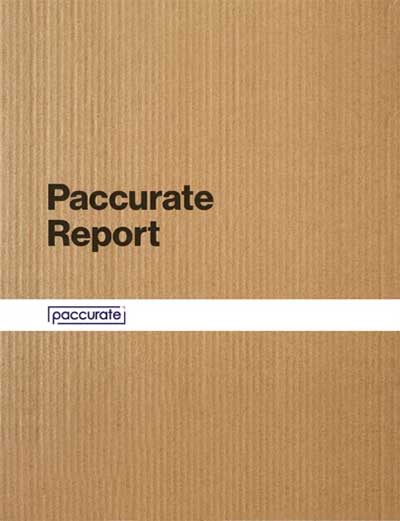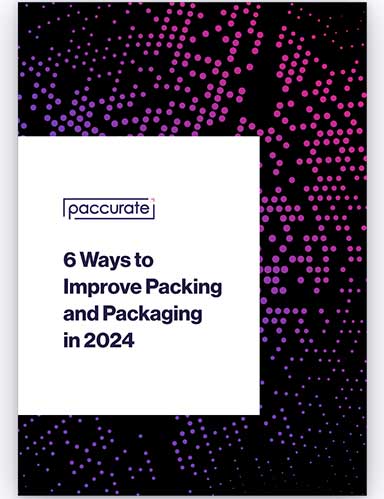Parcel handling on the move
Between the variety of packages and heavy volumes, parcel handling can be daunting. However, it’s manageable—especially with the help of automation.
Keep them moving. Every last one.
Boxes. Bags. Envelopes. Big ones. Small ones. Custom-sized ones. Heavy. Light. Everything-in-between. Cardboard. Paper. Plastic.
And more of all, including package designs yet to be imagined.
Clearly, parcel handling is not getting any easier.
Furthermore, expectations of both shippers and consumers are on the rise as delivery windows shrink.
Oh, is that all you want? I, of course, am more reasonable. Ok, maybe not all that more reasonable.
Sometimes just getting through the day is enough in a parcel handling operation. Then the people with the five- and 10- year plans arrive.
Are they serious? Yes. Should they be? No.
Now is a good time to collect your thoughts about parcel handling. So, we talked to some of the experts, and they have some advice for you. It’s worth a few minutes.
Set a baseline
First of all, “keep them moving” comes from Stan Sroka, director of parcel solution sales at Alstef Group. It seems to be one of the universal truths in parcel handling.
He’s also one of several who recommend incremental changes in parcel handling systems five to 10 years in the future. Closer to right now, Sroka is very much in the camp of a phased approach with a focus on adaptability for the next 18 to 24 months. As to that five to 10-year time frame, incremental changes are more to his liking. With all the change going on, that seems much more reasonable.
Sroka is also a fan of “just enough automation solutions” despite the workforce impairments everyone is living with these days. In other words, let’s not overdo it. After all, people are still part of automated solutions.
The emphasis, says Sroka, should be on minimizing people as much as possible. Not replacing them altogether. Some call this labor optimization.
Just as big a problem is a widespread inability to meet SLAs (service level agreements). Too often, too many parcel handling operations just can’t get enough throughput to meet all SLAs daily. At which point, many start to think robots.

“Everyone wants a robot. But every robot needs to make financial sense,” says Jon Stiles, sales manager at Alstef. The general rule of thumb, he says, is two-shift operation in a parcel operation to get an acceptable robot ROI.
“In addition, robots don’t solve every parcel handling problem. That’s just a fact. So, it’s important for operating managers to look for automation with a broad range. And automation doesn’t have to handle everything, but that sure would be nice,” adds Stiles.
Actually, “sure would be nice” is kind of where parcel handling sits today.
Nobody knows that better than Niall Prendiville, vice president of product management at FORTNA.
“We’re well past the stage of substituting automation for people in parcel handling. I would estimate that we’re about 30% of the way along the curve to optimization of handling processes with automation. And everyone in the process is learning as we go,” says Prendiville.
He continues to say that the extent of automation varies widely between different sectors and companies, with some being at the forefront of automation technologies from robots to artificial intelligence (AI). Others are still in the early stages of adopting automation or may have only implemented basic automation solutions. “Overall, the industry as a whole is increasingly moving toward automation due to the benefits it offers in terms of efficiency, accuracy and cost savings,” says Prendiville.
This is also where the parcel handling game changes still again. Prendiville calls it smart warehousing.
“We now need to deploy both automaton and software to track and move parcels. And that has an impact beyond the four walls,” says Prendiville.
Actually, last-mile delivery starts within the four walls of parcel handling facilities, he adds. “That’s where operations need to shift from being point-to-point solutions to being holistic life-cycle solutions. Some call them life-cycle solutions. They’re all about the entire system within the warehouse, not one department or another,” says Prendiville.
This is where smart warehousing ramps up. “Parcel handling is becoming more software dependent. Inventory planning. Demand forecasting. Work planning. Rate shopping. Demand driven replenishment. Those are several key areas here,” says Prendiville.
The software ranges from warehouse management systems to warehouse control systems and warehouse execution systems, explains Mark Fralick, CTO at Softeon.
This is also where—brace yourself —AI comes into the conversation. “Data analytics and AI-generated handling schemes that accommodate the day’s parcel profile and SLAs are becoming increasingly critical,” adds Prendiville.
“The future of your parcel handling operation is all about optimizing the handling of orders and packages as fast as you can as efficiently as you can,” says Prendiville.
That takes a smart warehouse.
Building it out
So, how are you going to get there?
Collaboration is a key word. Suppliers ranging from drives supplier NORD to system integrators Alstef and FORTNA all use it.
Collaboration is also shorthand for “no supplier does it all” and “this is complicated and undergoing constant change.”
That collaboration is essential for building just enough automation (to borrow a phrase) that does the right things to meet SLAs and other parcel handling requirements. The equipment options are wide and getting wider seemingly by the day.
Conveyors and sortation systems of all speeds still matter. So does data capture equipment to track the movement of parcels. We already know robots are here, and that includes everything from pick-and-place to autonomous mobile robots that move parcels.
Then there’s the matter of the subsystems within the facility that optimize specialized tasks and routings. Modularity has a special place here. And, of course, the overall system is at the top of the heap.

There’s also the matter of software in the background keeping all of that equipment on track.
For instance, a warehouse execution system (WES) is a critical planning tool, explains Suresh Bhaskaran, senior director of product development at Softeon. He says the WES evaluates what needs to be done today, factors in SLAs and pick up times and prioritizes the picking and handling process required. This is a rules-based process that allows the WES to manage volumes for specific cut offs.
There’s also what’s under the hood of all this equipment. Just ask James Chandler, key markets manager at NORD.
He says change is going on all the way to the drives in parcel handling systems. “Higher efficiency drives and more sophisticated control requirements figure prominently at this basic level of parcel handling. Higher degrees of control allow faster, more accurate transfer and sorting of parcels.”
As if simply getting parcels out the door isn’t enough of a challenge, sustainability is starting to have an impact on parcel handling. Prendiville says these are the early days.
“Parcel handling traditionally has not prioritized sustainability. Yet, there’s a rising emphasis on optimizing both orders and packages to align sustainable practices,” Prendiville adds.
Over at NORD, Chandler says drive system efficiency is receiving increasing attention. It’s all a matter of systems with higher efficiency ratings that can contribute to a company’s sustainability rating.
That said, Sroka’s comment about an 18 to 24 month planning horizon for parcel systems becomes almost self-evident. There’s simply too much going on from the volume and profile of parcels to the equipment itself to think much further out.
The best position to deal with the future is with modularity and incremental additions/subtractions to the overall system, says Sroka.
Tools of the trade
To help address some of those shifts, several suppliers recently offered their own parcel handling upgrades.
Emmet Stiff, a ModSort business development manager at Regal Rexnord, says its omni-directional divert and transfer module gently sorts a wide range of packages, including polybags, without damage.
ModSort receives a parcel and diverts it left or right or simply lets it pass directly through. Stiff says the standard module handles packages up to 50 pounds and measuring 30 x 30 inches at rates of 40 per minute.
Adding divert zones to the module and configuring the motorized drive rollers (MDRs) ensures ease of handling up to 5,000 parcels an hour. A large format also handles packages up to 60 inches across and can be used for bulk handling, says Stiff.
Meanwhile, FORTNA offers OptiSweep. It’s a subsystem that automates post sortation handling of parcels in high-volume DCs, explains Prendiville.
AMRs collect parcels in totes and carry them to designated consolidation points. Software pre-positions the bots based on sortation activity, optimizing parcel handling without labor. OptiSweep is said to reduce labor at this stage of parcel handling by 60%.
OptiSweep’s modular structure, says Prendiville, ensures unconstrained throughput, allowing for effective ROI on systems of both small and large scales, handling up to 34,000 parcels per hour.
Kali Wahrman, general manager of e-commerce for Ultimation, talks about a high-throughput conveyor platform (HPP). It handles parcels handled by sorting conveyors and where decline and incline conveyors are needed. Wahrman says it includes a diverter module that can be used as an autonomous mini-sorter or intelligent diverter module post main sortation.
A robotic induction/picking solution from Alstef is AI-powered for multi-axis flexibility, says Sroka. End-effectors with a multi-cup parcel gripper picks and moves boxes as well as polybags weighing up to 22 pounds.
Sroka says a single robot can handle up to 1,500 parcels an hour. It can move parcels from bins, chutes and containers, moving them to containers, a sorter, an AMR or an in-motion belt.
At the drive level, NORD offers IE5+ motors as well as compact variable frequency drives. NORD’s DuoDrive integrated IE5+ motor and gear unit features a single-stage helical gear unit in one housing.
As you know all too well, the deluge of parcels moving every day is not diminishing. Fortunately, suppliers are constantly coming up with new ways to move all those boxes, bags and envelopes more efficiently. It’s a battle. But automation already has the upper hand.













